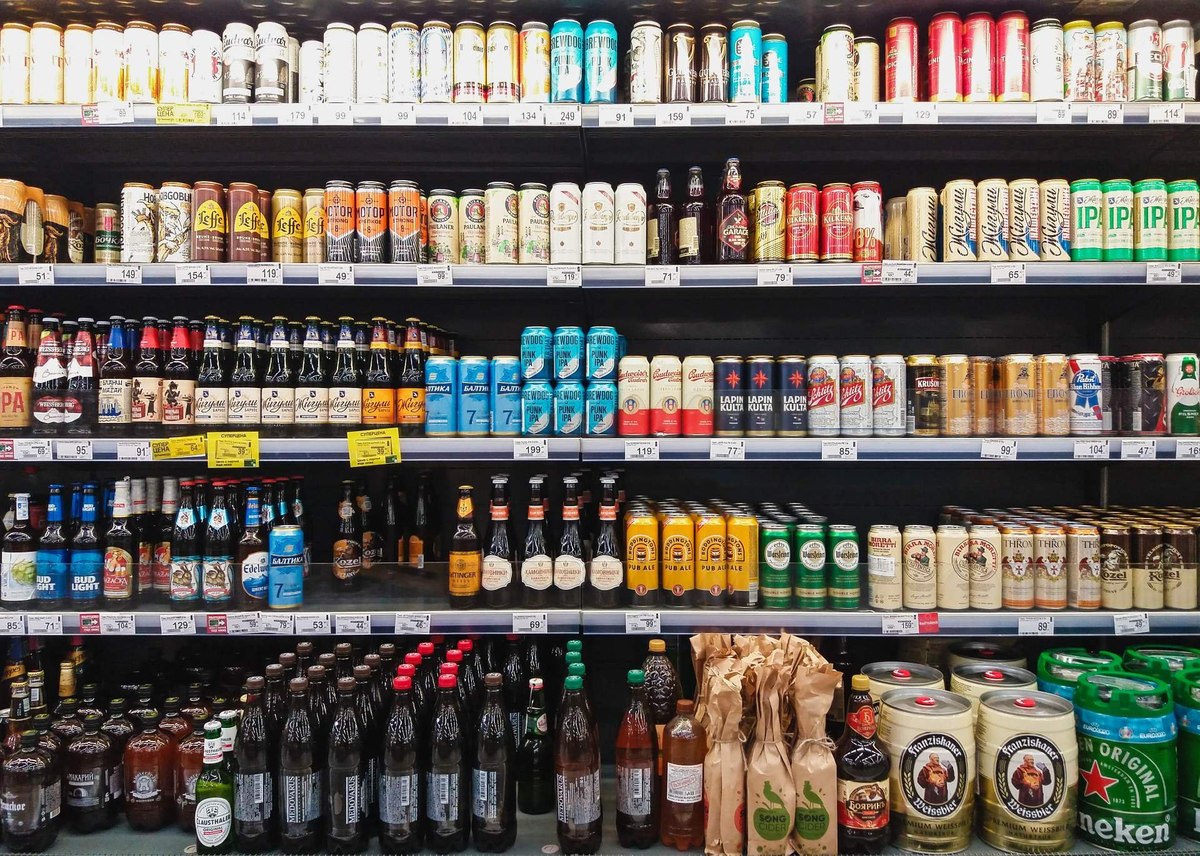
The changing landscape of alcohol and non-alcoholic drink preferences in the UK
As the nation’s relationship with alcohol continues to evolve, a variety of factors—including health consciousness, social behaviour, and economic shifts—are at play. The past year has brought noticeable changes in both alcohol and non-alcoholic drinks consumption. This evolving landscape is not just reflective of global trends but also reveals deeper, more specific insights into consumer behaviour within the UK.
Decline in alcohol consumption
A key shift in the UK has been a steady decline in the number of adults reporting alcohol consumption. Data from YouGov’s industry-specific brand tracking platform, YouGov CategoryView, indicates that the proportion of UK adults who drink alcohol dropped from 78% in August 2024 to 72% by December 2024. This ongoing trend suggests potential long-term implications for the alcohol industry.
Supermarkets remain the primary source for alcohol purchases, frequented by 87% of consumers. Bars and pubs are the next most popular venues (51%), followed by restaurants (35%).
In contrast, outlets such as corner shops (11%), tap rooms and breweries (8%), and liquor shops (7%) account for smaller shares of alcohol purchases.
Another key finding from YouGov CategoryView is the tendency for UK consumers to purchase alcohol not just for themselves, but for others. In fact, 55% of adults report buying alcohol for themselves and for other people when they make alcohol-related purchases. This highlights the social aspect of drinking in the UK.
Popular alcohol types and changing preferences
When it comes to the types of alcohol consumed, wine and beer continue to dominate the UK’s alcohol preferences, with 67% of adults drinking wine and 62% consuming beer. Wine has remained relatively stable in its popularity over the past five months, while beer consumption has been in gradual decline. Meanwhile, spirits and liquors are gaining traction, particularly during colder months when warming beverages are favoured.
Taste is the most significant factor in why people consume alcohol (80%). This finding is consistent across different types of alcohol. The wide range of flavours available in ready-to-drink cocktails and infused liquors appeals to two-fifths of consumers, with 40% of people frequently consuming ready-to-drink cocktails and 38% drinking infused liquors. Affordability also influences choices, particularly for beer (31%) and hard seltzers (34%), as does convenience, with beer (30%) and hard seltzer (29%) being popular.
Key drinking occasions for alcoholic beverages
The occasions on which people consume alcohol vary widely and the type of drink depends on it. Beer is most often consumed during social activities such as hanging out with friends (64%), meals (40%), special occasions (45%), at family get-togethers (40%) and while watching sports games (30%). Similarly, wine is a preferred choice for meals (64%), special events (48%), and gatherings with friends (48%), while smaller percentages drink wine after work (17%) or on dates (16%).
Hard seltzer, another increasingly popular beverage, is primarily consumed while hanging out with friends (68%) or during special occasions (62%). It is also enjoyed at family get-togethers (30%) and live events (28%).
More than half of liquor drinkers (58%) report consuming it while hanging out with friends, and 54% consume it on special occasions. Liquor is also a drink of choice for people winding down after work (20%) or when alone (18%).
Cider sees similar trends, with 54% of consumers enjoying it socially and 50% during special events. Some also enjoy cider while attending live events (22%) or on dates (19%).
Reasons for not consuming alcohol
Despite its prevalence, alcohol consumption faces notable resistance. The most common reason for abstinence is a simple lack of interest, cited by 58% of non-drinkers. Health concerns (30%), dislike of alcohol’s taste (23%), and interactions with medication (13%) are also significant factors. Religious or spiritual beliefs (11%) and past negative experiences (12%) further contribute to the decision to avoid alcohol.
Non-alcoholic beverages on the rise
The non-alcoholic beverage market has seen remarkable growth in the UK. In the past three months, 62% of consumers reported trying non-alcoholic beer, followed by non-alcoholic wine or champagne (37%), spirits (25%), and cider (24%).
Consumption of non-alcoholic beverages, however, tends to be occasional. Only 3% of consumers drink them daily, while 9% do so several times a week and 15% several times a month. A majority (55%) consume non-alcoholic drinks less than once a month, indicating they are often viewed as indulgent alternatives rather than regular choices.
Spending and popular brands
Most consumers (61%) spend £9.99 or less per month on non-alcoholic beverages, with a smaller group (26%) spending between £10 and £24.99. Only 3% spend upwards of £50.
Heineken 0.0 is the most popular non-alcoholic drink, with 53% of consumers having purchased it in the last 30 days. However, data shows that the popularity of Heineken 0.0 has slightly declined over the past few months. On the other hand, Becks Blue Alcohol-Free and Peroni Libera have shown month-on-month increases, each attracting an average of 27% of consumers.
Looking to the future, Heineken 0.0 remains the leader in purchase consideration, with 57% of people considering it for future purchases. However, the competition is heating up. Peroni Libera and San Miguel 0% are close behind, with 44% of consumers indicating they would consider purchasing these beverages. Becks Blue Alcohol-Free (37%) and Erdinger Alcoholfrei (27%) also feature prominently in future purchase considerations, suggesting that the non-alcoholic market is rapidly diversifying.
Methodology: YouGov Beer and Hard Seltzer CategoryView collects data on brands & consumers across the UK every month. The data is based on the interviews of more than 26,000 adults in UK aged 21+ between March 1st and December 31st, 2024.
Image: Getty Images